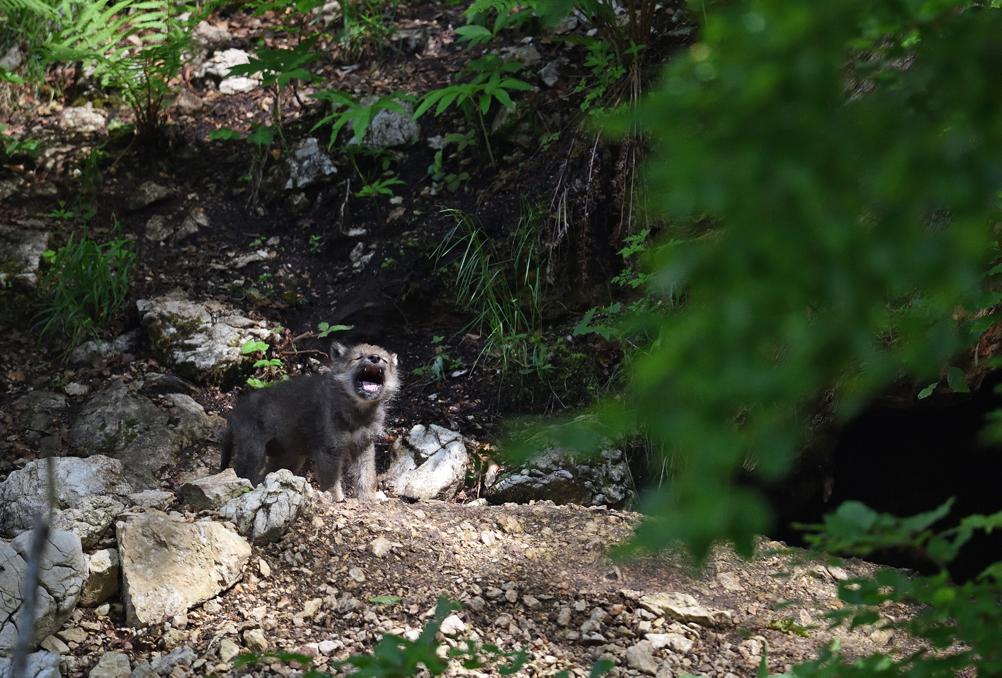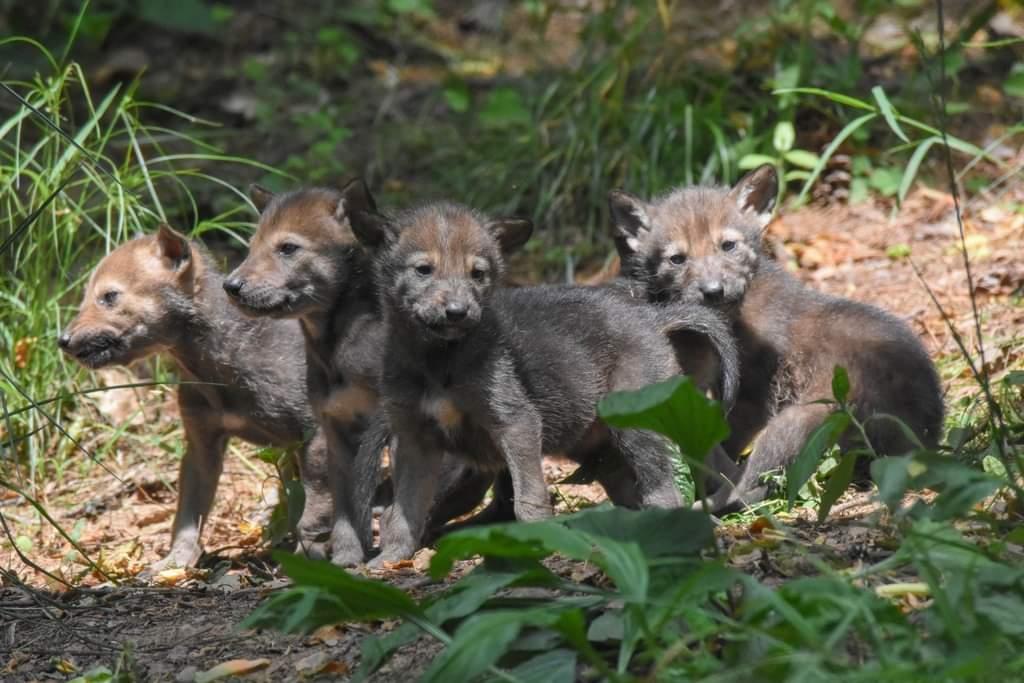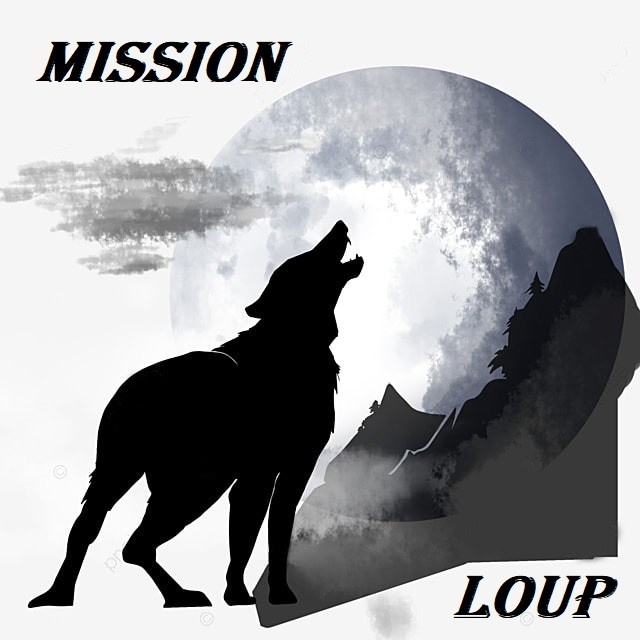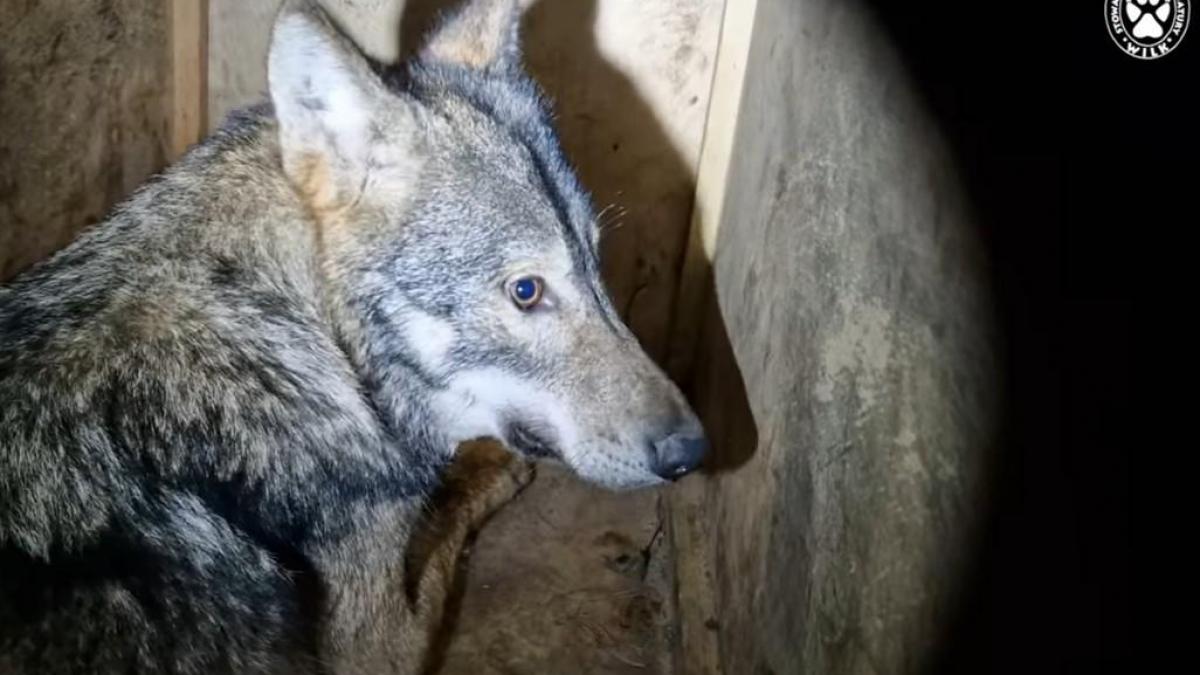
The reproduction and whelping periods are crucial in the pack life, they affect the survival of the pack and the species. They also lead, quite logically, to organizational and behavioral changes within the pack.
The mating season takes place between mid-February and mid-March. Wolf sexual maturity generally occurs in the second year of its life, around 20-22 months. Ovulation occurs only once a year, unlike most domestic dogs (two ovulation per year). However, it's not impossible that a female mates during her first year, as it has been the case of a young subadult of the Val d'Herens pack in 2022. Born in May 2021, she was shot following a legal shooting authorization at the beginning of March 2022 and the autopsy showed she was expecting. Physiologically, a wolf can mate from 10 months old.
During the mating period, the male is more territorial, makes urine markings more frequently and the couple is more demonstrative towards each other. As with many other species, the male locates the right time, which corresponds to the ovulation period (oestrus), in the urine of the female, which he frequently sniffs, as well as the vulva area. If there are several possibly sexually mature males in the pack, violent conflicts can occur sometimes, which can lead to hierarchical changes within the pack.
In the case several sexually mature females are present in the pack, a rather extraordinary phenomenon occurs: a form of psychological castration ! In such circumstances, the reproductive female is particularly aggressive with the others. She'll attack any female approaching the reproductive male to prevent him from mating. These repeated aggressions lead to a non-ovulation of the other females present and modify their behavior towards the reproductive male, even without intervention of the reproductive female. This is a natural way to limit births and the number of individuals in a natural way.
However, as nature has its own rules, multiple births have been observed in areas with low wolf densities. Some packs reproduce from both the breeding female and another one in the pack. This may be explained by the need to ensure the survival of the species when wolves aren't well established in the region, through more intensive reproduction. So far, this phenomenon hasn't been observed in Switzerland or neighbouring countries. As the density of the lupine population is fairly high in the Alps, wolves won't use this procedure, and only the reproductive female will give birth to offspring.
Mating takes place during the oestrus period, during which the female is receptive and accepts mating. It can last between a few days and 2 weeks. Once the mating's over, as for dogs, the male and the female remain attached to each other for several several dozen minutes, they're back to back. It's due to the swelling of the glans penis and the contraction of the vaginal sphincter. This is also the moment other members sometimes choose to harass the couple. The mating ends either with a gestation or with a nervous pregnancy, due to the secretion of hormones
The wolf gestation's period will last between 62 and 64 days. In our country, the birth takes place between the end of April and mid-May but it can vary according to the latitude. The litters count between 3 and 7 cubs, which weigh between 300 and 500g and are born in a den previously dug by the pack or already used the previous year(s). The cubs are deaf and blind and remain so for 8 to 12 days. However, they're not insensitive, they perceive temperature, taste, touch, pain and have reflexes (innate). In the first days, they sleep 90% of the time, the rest is devoted to feeding. Sleeping has a very important role for the growth and the maturation of the brain. During the neonatal phase, only innate behaviors (1) are present. These are the unconditioned reflexes and fixed motor patterns (2).
The female stays permanently with her cubs to provide them with the necessary warmth (hypothermia leads to rapid death at this age) and to nurse them very frequently. She licks their perineum to provoke urine and defecation because the cubs don't do it spontaneously. This licking also leads to the learning of the "sumission" position. As the breeding female can't hunt, she's fed by her partner and, if there are any, by other members of the pack. The food is deposited in front of the den, no member is allowed to enter, including the happy father. So the work of the rest of the pack is oriented on hunting and feeding the reproductive female at this period.
From the age of 2 weeks, the cubs begin to walk and explore the interior of the den. They start "practising" howling at about 3 weeks of age, in the form of small, sweet cries. Once they are more robust, at about 25 days of age, the cubs are allowed to go out near the den and get to know the other members of their pack. They also start solid food with a typical and very recognizable behavior: licking the lips of other individuals (parents and subadults). Licking provokes the regurgitation of the previously ingested meat. Weaning takes place between 2 and 3 months. Through games, discovery of their environment and contact with other members, the cubs learn, over the months, everything they will need in the future, such as the development of motor patterns (2), various skills (first through games and then by accompanying the pack from autumn onwards), socialization, behavior, etc.
Reproduction depends on several factors such as the current number of members in the pack, the food resources (prey numbers), the environment, the occurrence of losses/death in the pack, etc. According to lupine specialists who have observed packs for decades, predators can self-regulate not to be outnumbered and to avoid, quite logically, the disappearance of their preys that would lead them to their own death. But it's extremely important to understand that repeated shooting or poaching will also lead to a possibly more sustained reproduction (taking into account other factors), to allow the survival of the species and of the pack itself.
At the moment, Arsene and his family are certainly taking care of their new litter. They'll have a lot of work to do in the next few weeks to feed Lupine and her cubs.
Dictionary
(1) Innate behavior : determined by heredity and part of the animal's genetic heritage (independent of the individual's experience/learning).
(2) Motor patterns : innate sequence of genetically programmed behaviors



